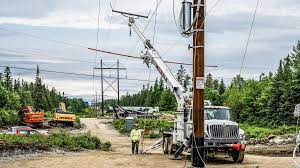Wired for Success: Innovations Shaping the Future of Power Line Construction
Navigating the landscape of power line construction unveils a world where precision meets engineering prowess. From the sprawling expanses of rural terrain to the intricate urban grids, the process of erecting power lines is a testament to human ingenuity and strategic planning.
Every aspect of power line construction demands meticulous attention, starting from the initial surveying and route selection. Engineers meticulously analyze topographical data, environmental considerations, and regulatory requirements to chart the optimal path for the transmission lines. This phase sets the foundation for the entire project, laying the groundwork for the seamless integration of infrastructure into the surrounding landscape.
Once the route is delineated, the construction phase commences, encompassing a symphony of activities orchestrated with precision. Heavy machinery roars to life as crews excavate trenches, erect transmission towers, and string conductors with surgical precision. Each component of the power line system is meticulously installed, adhering to stringent safety protocols and engineering standards to ensure reliability and longevity.

Moreover, power line construction is not merely about erecting structures; it’s about forging connections that power communities and fuel progress. Beyond the tangible infrastructure, power lines symbolize the lifelines of modern civilization, facilitating the flow of electricity that drives industries, sustains households, and empowers innovation. In essence, every tower erected and every wire strung represents a conduit of progress, illuminating the path towards a brighter future.
One notable innovation revolutionizing power line construction is the advent of composite materials for transmission towers. These lightweight yet durable materials offer a host of advantages over traditional steel, including corrosion resistance, reduced maintenance requirements, and enhanced resilience to extreme weather events. By embracing composites, engineers can construct more resilient power line infrastructure that withstands the test of time while minimizing environmental impact.
Furthermore, the integration of drone technology is transforming the way power line inspections are conducted, enhancing safety and efficiency. Drones equipped with high-resolution cameras and LiDAR sensors can survey vast stretches of transmission lines with unprecedented speed and accuracy, identifying potential defects or vegetation encroachments that may pose risks to the system. This proactive approach to maintenance not only enhances reliability but also minimizes downtime and operational costs.
In essence, the fusion of innovation and power line construction heralds a new era of progress, where infrastructure is not just built but optimized for the challenges of tomorrow. By embracing cutting-edge technologies and sustainable practices, the industry paves the way for a resilient and interconnected future powered by ingenuity and foresight.
